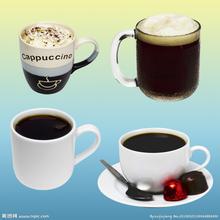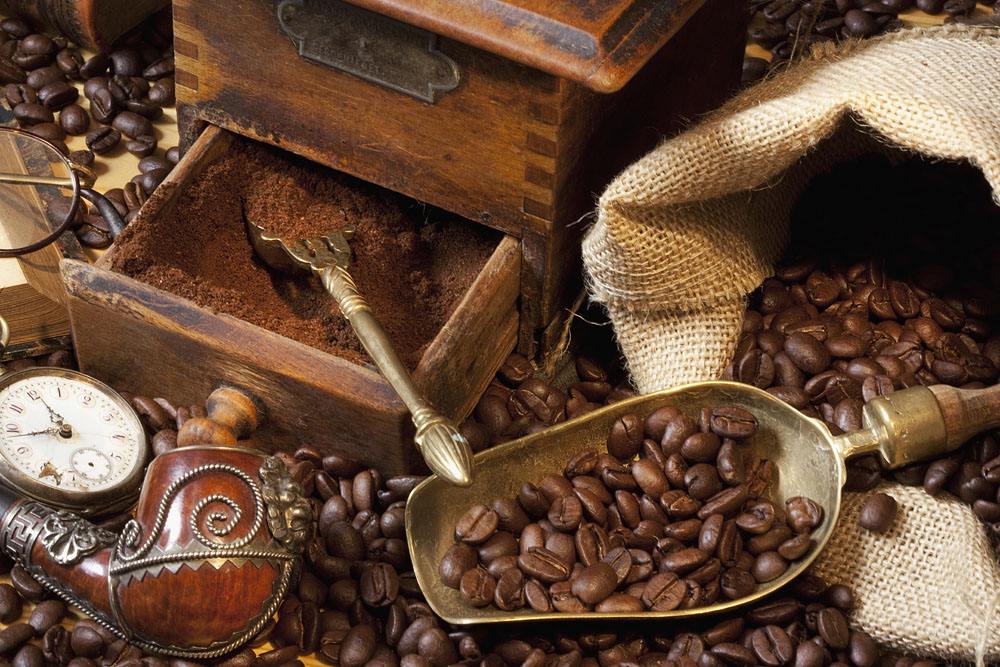Store, payment or scenario? Coffee brand competition map

■ / Cui Dapeng, Qing Wenbo and Zhang Chunyan
Regardless of whether a brand is strong or weak, 500 stores are roughly enough to ensure that the per capita radius is less than half a kilometer; the share of growth when more than 500 is very limited.
Cafes are blooming everywhere in large and medium-sized cities in China, and major brands are racing the enclosure. The way to expand market share is usually to expand stores or improve in-store experience. For example, in December, Chinese mainland announced that nearly 2500 Starbucks stores were connected to Starbucks. So how do store expansion and mobile payments change the competitive landscape of the market? What do these strategies have to do with brand strategy? How do brands play games?
In the final analysis, all the competition is for the choice of consumers, and the essence of all marketing is to shape the choice tendency of consumers. We studied the marketing strategy of coffee shop brands from the perspective of consumer choice, and sampled 4800 consumers from Beijing, Guangzhou, Shenzhen, Hangzhou, Wuhan, Nanjing, Chengdu, Tianjin and Qingdao. In the simulation, we consider the impact of store expansion and access mobile payment on brand market share, and find market growth opportunities for second-tier coffee brands in the market game of each brand.
Link: the research method we use is to establish a market choice model according to the statistical distribution of consumer choice, and to calculate and evaluate consumers' choice tendency under various marketing strategies according to the model. The model comes from the discrete choice model of Nobel Prize winner Professor Daniel L.McFadden. The calculation is realized by Bayesian method, and the market simulation is carried out by Monte Carlo square method. The tendency of each cafe brand to be chosen is expressed by probability, which is usually called preference share. When the simulated scenario is close to the actual market situation of a city, the preference share is infinitely close to the market share.
The more stores, the better? 500 families is enough.
The number of coffee shops is related to the number of people who drink coffee. Assuming that the urban area is 20 km x 20 km, the coffee drinking population is 1 million and randomly distributed, and the number of stores of each major brand is 20 and randomly distributed.
In the survey, we found that with the rapid growth of independent non-chain stores, the share of each brand continues to be eroded. Strong brands, such as Starbucks, are least affected by other brands' expansion, while weak brands are most affected by other brand expansion, falling by nearly 30%. When the number of independent non-chains exceeds 500, the marginal growth of share becomes very slow.
When the number of independent non-chain cafes increased to 900, Starbucks's market share fell by 17.14%, Kashijia by 27.23%, coffee with you by 29.08%, and Man Coffee by 28.67%. (see figure 1)
Second, when strong brands expand, the same number of stores can bring more market share. Starbucks increased by 39.72% when it expanded to 900, while the share of independent non-chains under the same section was 23.34%.
But this does not mean that strong brands should expand their stores indefinitely. In the same market, assuming that other brands maintain 20 stores, Starbucks expanded its market share from 48.78% to 66.38% when its stores expanded from 100 to 500, and from 500 to 900, the market share only increased to 69.95%, that is, an increase of 400 stores resulted in a 3.53% increase in market share.
Therefore, regardless of whether a brand is strong or weak, 500 stores are generally enough to ensure that the per capita radius is no more than half a kilometer; when more than 500, the share of growth is very limited.
WeChat Pay, an opportunity to increase market share
It is understood that after connecting to WeChat Pay, Starbucks stores saved an average of 10 to 20 seconds in single-person checkout time, improving consumers' digital purchase experience. But what kind of market benefits does this integration bring to Starbucks?
In the simulated scene close to the actual number of stores of various brands in first-tier cities, we found that after connecting to WeChat Pay, consumers were significantly more likely to choose Starbucks, from 47.57% to 51.69%. In addition, connecting to WeChat Pay allows Starbucks to combine offline consumption with online social networking, strengthening the interaction between users and realizing the link between users and brands. Starbucks seized an opportunity to significantly increase its market share and improve its digital image. At the same time, the survey also shows that Starbucks' preference share can be increased even higher if it is connected to Alipay. It reached 52.54%, which is related to Alipay's higher penetration rate and consumers' longer habit of using Alipay. (see figure 2)
Scene assets, opportunities for second-tier coffee brands
In this survey, we also simulated the performance of the second-tier coffee brand Kashijia in three different scenarios, and found that the increased share of Kashijia through store expansion and access to Alipay mainly came from brands of equal or lower status. Starbucks' position is hard to shake. This also means that second-tier brands only rely on store expansion to increase their share, only the growth and decline of market share between the same brands, because when the same brands use the same means to expand, it will offset the increase in the share of other brands. Therefore, we believe that second-tier brands should start from the construction of brand equity, to do brand positioning and product design based on lifestyle and consumption scenarios, so as to enhance the possibility of consumers' brand choice.
Consumers have different needs every day, for example, when they need to relax alone, when they need to get together with friends. All of these tasks may ignite the need for consumers to walk into a coffee shop. In fact, in the scenes created by each cafe brand, the product, atmosphere, tone, service style and so on constitute a kind of life experience. These products and their experiences form consumers' impression of a cafe. Over and over again, consumers will gradually establish a causal relationship between the consumption scene and the brand, and the brand will become a preferred choice for consumers in this scenario.
For example, in the scene corresponding to Starbucks, in addition to the scene of "want to sit down and enjoy a cup of pure coffee" (47.09%), "get together with friends" (43.36%), "meet with friends / colleagues / clients" (46.84%) and "spend leisure time with family" (50.98%) are the three most valuable scenes in Starbucks. All three scenes point to the concept that Starbucks has a firm say in socially related scenes. (see figure 3)
However, Starbucks' scene assets are not evenly distributed, which is also an opportunity for second-tier coffee brands to develop brand scene assets.
Take Ka Shijia as an example, in terms of difference, scale and strong-weak relationship, the sum of the frequencies of "enjoying alone" and "thinking space" is 33.9%, which exceeds 29.2% of Starbucks' concept of "getting together". At the same time, "alone enjoyment" and "thinking space" point to the concept of "solitude", which is obviously different from Starbucks' concept of "gathering". From the perspective of consumers' negative feedback to Starbucks, there is a strong correlation between "gathering" and "noisy"; consumers have a strong demand for "quiet"; Starbucks has relatively weak assets in the scenes of "enjoying alone" and "thinking space". At the same time, other brands are not far better than the family in these two scenes. "enjoy alone" and "thinking space" do not contradict other impressions of the family, such as "literary and artistic atmosphere", "fashionable atmosphere" and "relatively high-end".
Therefore, the scene selection of Ka Shijia should consider "enjoy relaxation and leisure for a while alone" and "want to have a space to think and work" (thinking space). In our simulated Kashijia brand positioning change, the effect expectation also confirms this judgment: when Starbucks and Kashijia both expand to 300 stores and connect to Alipay for scene positioning, the focus of scene positioning can make the market share of Kashijia (300 stores) and Starbucks (500 stores) equal, 26.01% and 25.59%, respectively. In addition, the halo effect of the brand will also effectively increase the share of Ka Shijia in other scenes.
Brand positioning and product design based on lifestyle and consumption scene is the focus of marketing strategy. Whether we can finally bring consumers a pleasant scene experience and whether we can build a more high-quality living way based on a certain scene is the ultimate direction of brand equity construction. Store expansion, mobile payments, or other marketing strategies based on strong brands are the most effective.
(the authors are all from Shanghai Dazheng Market Research Co., Ltd.)
Important Notice :
前街咖啡 FrontStreet Coffee has moved to new addredd:
FrontStreet Coffee Address: 315,Donghua East Road,GuangZhou
Tel:020 38364473
- Prev

Ten of the best and most famous coffee in the world
Coffee is a beverage made from roasted coffee beans, which is the main drink popular in the world along with cocoa and tea. Next, the editor will introduce to you the ten best and most famous coffees in the world. I hope you all hope. 1. Mocha coffee shows a strong New York flavor in a small cup. The preparation method: add 20ml chocolate syrup to the cup and deep-fry it.
- Next

MY ZONE Coffee join: what service + innovation needs is "craftsman spirit"
There is a soul in every industry, that is the craftsman spirit, which urges the owner to be patient, meticulous but keep up with the pace of the times, dare to innovate, and devote himself to creating the best quality products in the industry. In the coffee industry, the one that can best reflect this spirit is the service coffee joining brand. Positioning boutique service-style coffee, exquisite and perfect is its consistent pursuit. Affiliated to the City Hotel Collection
Related
- The milk tea cup becomes smaller?! Overlord Tea Girl launches a new "Return to Yunnan" series
- Accused of selling counterfeit and high-priced coffee beans! Well-known boutique coffee brand "Oukelao" bowed and apologized!
- How to make espresso dumplings? Can I eat coffee and glutinous rice balls together?
- Save the unformed and stagnant powder cakes in one second! What is the problem with stagnant water in the powder bowl of the espresso machine?
- What does hand-brewed coffee stop mean? Why is it not recommended to make coffee by hand?
- Is it normal to smell like coffee? Why does coffee smell like alcohol? What's wrong with the strong smell of cold extract ice dripping ice brewed coffee?
- How to solve the problem that hand-brewed coffee extraction takes too long? Why is the water flowing so slowly when making coffee?
- The main points of making Australian white coffee, the proportion details, how does Australian white properly foam and blend the flowers?
- Can ice water make cold extract coffee? What is the difference between room temperature water and ice water for making cold coffee?
- What milk is best for making latte and white Dirty coffee? What is the difference between different brands of fresh milk and pure milk for making coffee?

